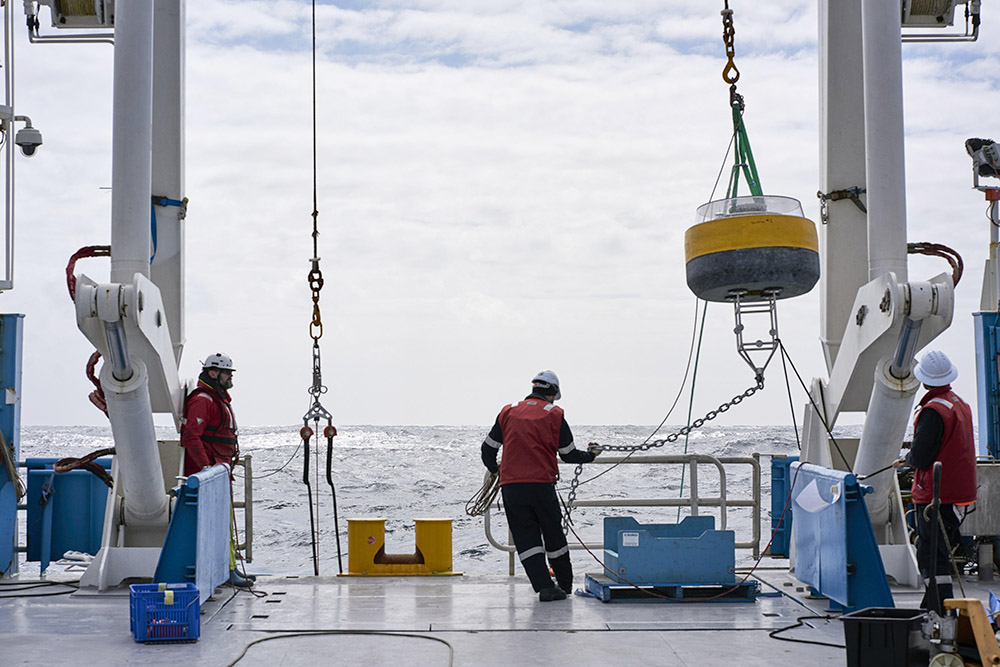Sediment traps deployed to measure biological carbon uptake
Philip Boyd
Voyage Chief Scientist
The centrepiece of the SOLACE voyage – a suite of seven repeat 3.5 day sampling cycles – commenced on 9 December with the deployment of an upper ocean mooring.

The mooring is designed to sample the vertical rain of particles settling into the Twilight Zone and to provide information at each of a series of depths on how the downward flux of particles, their carbon content (i.e., POC flux), and their characteristics changes with depth. These vertical gradients, or trends, in turn provide insights into processes controlling the biological pump, along with estimates of how the magnitude of the POC flux decreases with depth.
The mooring comprised 3 sediment traps (that collect and preserve particles originating in the surface ocean such as marine snow), and 3 RESPIRE particle incubators/interceptors (see ttps://www.nature.com/articles/s41561-019-0476-6) with one of each type of sampler deployed per depth in the upper Twilight Zone between 150 and 250 m depth.
The mooring will be deployed for three days. The sediment traps will intercept settling particles using a range of differently prepared trap tubes (such as those containing polyacrylamide gels to separate particles based on their specific gravity). These measurements are complemented by RESPIRE which measures the rate of remineralisation by attached bacteria on the particles that are intercepted over a 36 h period. Together, they will provide insights for the waters just below the sunlit euphotic zone of the many transformations that sinking particles undergo as they sink towards the oceans’ interior.
Over the three day period during which the mooring is deployed, a host of diverse but complementary activities will take place around the clock (see carton below). They range from measuring the optical properties of the upper ocean (to assist with improving the accuracy of satellite observations of the surface ocean), vertical net tows for zooplankton, to midwater trawls for mesopelagic life – such as myctophid fish – in the Twilight Zone. We will hear more about each of these measurement approaches in forthcoming blogs. In addition, some of the particles sampled by the sediment traps and RESPIRE interceptors will be used subsequently for a suite of lab based experiments in the Constant Temperature lab onboard the RV Investigator. Such experiments will provide additional mechanistic understanding that can be used to further interpret the data sets from the Twilight Zone particle assemblage.

summarise voyage activities on SOLACE. Activities featured in this blogpost include the deployment
of sediment traps (see (a) above left); zooplankton vertical hauls ((c) above right); mesopelagic
trawls ((e) above right) and oceanic bio-optical measurements to improve satellite estimation of key
upper ocean properties of the biological pump (satellite, top left).

Philip Boyd is Professor of Marine Biogeochemistry at the Institute of Marine and Antarctic Studies at the University of Tasmania. Philip’s in-depth research interests range from ecology to biogeochemistry and include the joint development of decision support tools (such as for climate change, geoengineering) with economists and policy analysts.



